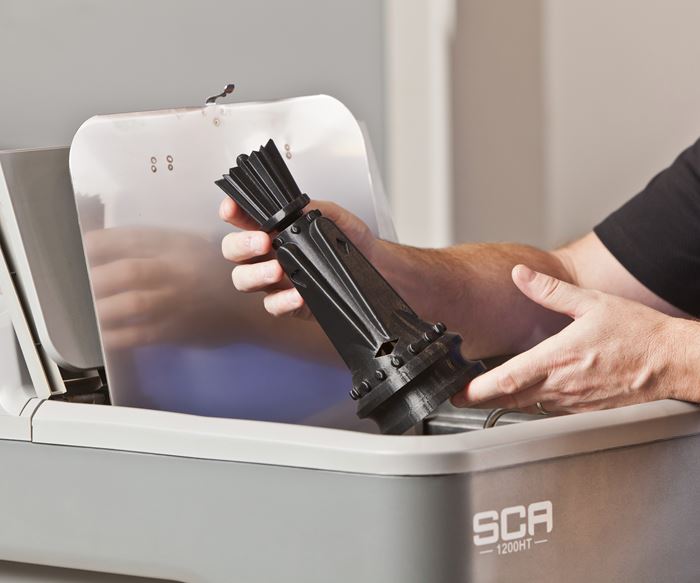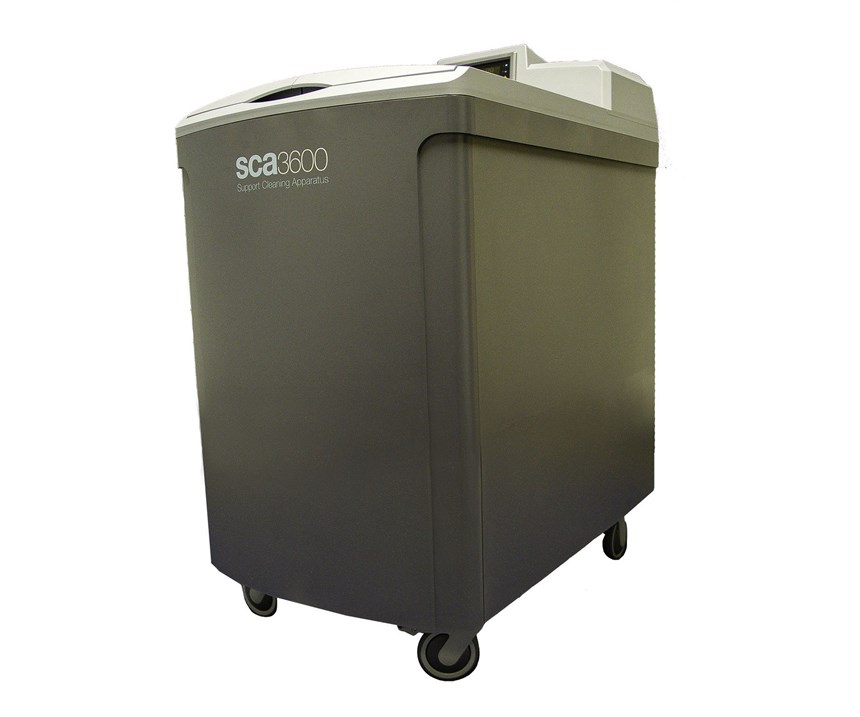PADT Patents Apparatus for Removing 3D Printing Support Materials
The Support Cleaning Apparatus (SCA) removes support structures from parts 3D-printed using Soluble Support Technology (SST) material.
Share
Read Next
PADT, a provider of simulation, product development, and additive manufacturing (AM) services and products, has been awarded a U.S. patent for its Support Cleaning Apparatus (SCA) system, invented by Rey Chu, Solomon Pena and Mark C. Johnson. The SCA systems are intended for use with any Stratasys 3D printers that use the Soluble Support Technology (SST) material, and are currently sold by Stratasys.
“When Stratasys first introduced its soluble support material that can be dissolved with chemicals to help remove supports in the 3D Printing process, we knew that existing support removal devices were not reliable or efficient enough to handle the innovation,” says Rey Chu, co-founder and principal, PADT. “We used computational fluid dynamics simulation, our extensive product development skills and knowledge from over two decades of 3D printing experience to design the industry’s most efficient and reliable support cleaning solution. We are proud that our SCA system has now been granted patent protection.”
PADT shipped its first SCA system in November 2008. There are currently two units in the SCA family, the SCA-1200HT with a 10 × 10 × 12" part basket and the larger SCA 3600 with a 16 × 16 × 14" part basket. The systems offer temperature ranges suitable to remove support from all fused deposition modeling (FDM) and PolyJet materials including: ABS, ASA, PC, nylon and PolyJet resins.
Related Content
-
DMG MORI: Build Plate “Pucks” Cut Postprocessing Time by 80%
For spinal implants and other small 3D printed parts made through laser powder bed fusion, separate clampable units resting within the build plate provide for easy transfer to a CNC lathe.
-
How Electroplating Works for Polymer 3D Printed Parts
Baltimore-based RePliForm specializes in electroplating of 3D printed polymer parts for functional applications. This video explores how the process works, and potential benefits and uses for this technique.
-
Possibilities From Electroplating 3D Printed Plastic Parts
Adding layers of nickel or copper to 3D printed polymer can impart desired properties such as electrical conductivity, EMI shielding, abrasion resistance and improved strength — approaching and even exceeding 3D printed metal, according to RePliForm.












